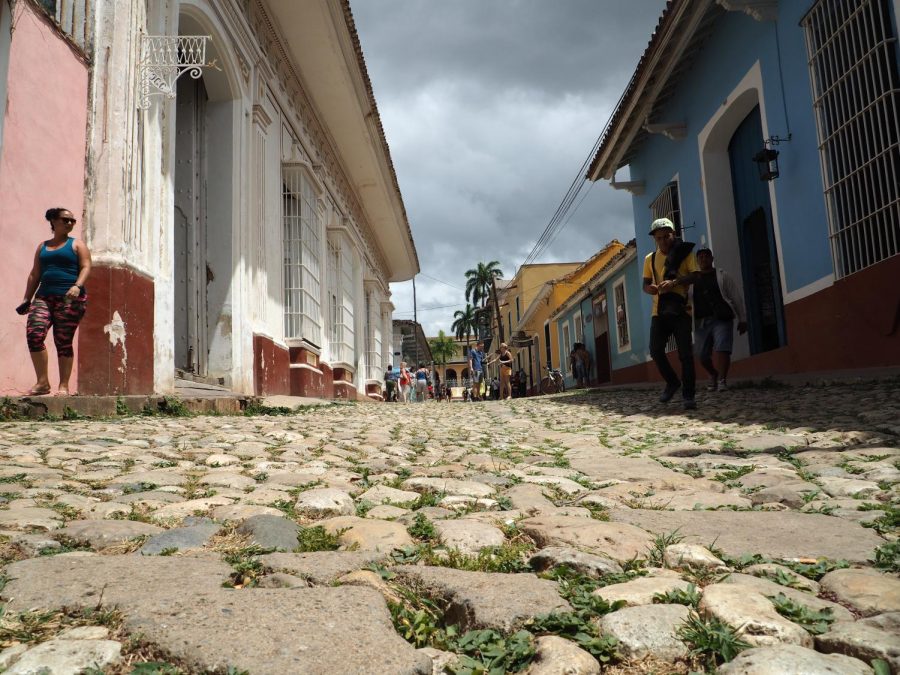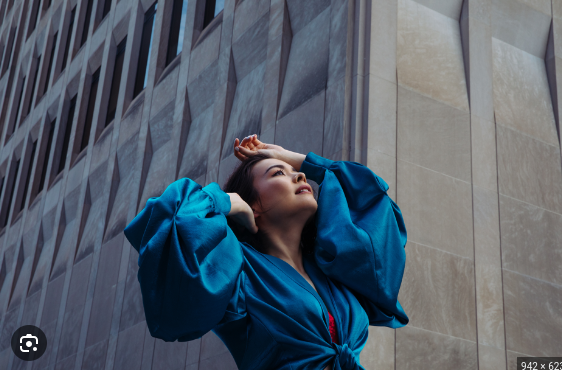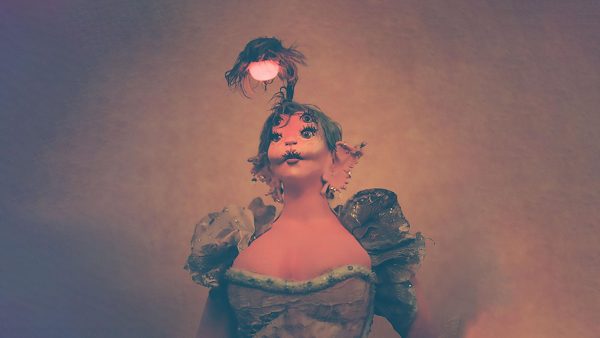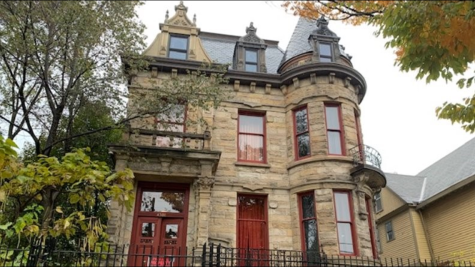A Walk Through Cuba
A cobblestone street in Trinidad, Cuba
May 20, 2018
In late March of 2018 I had the opportunity to travel to Cuba. In Cuba, I talked to locals, traveled around the country, and just began to understand Cuban culture. I had rice and beans at every meal, listened to authentic Cuban music, and stayed up until 12 AM talking with the owner of the casa particular I stayed at. Here is what I learned.
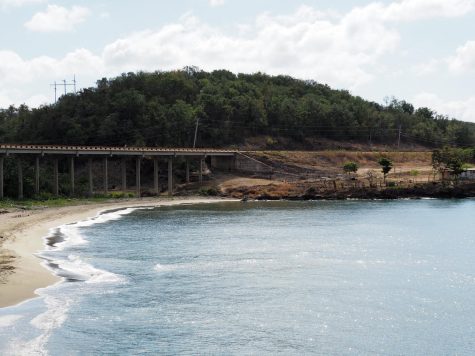
Cuba is known for its classic cars, the embargo, tobacco products, and La Revolucion. The Cuban revolution brought forth a new government- communism. What’s more; some may recognize Cuba for it’s ‘Special Period’, an economic crisis that led to a severe lack of food and basic necessities as a consequence of the Soviet Union collapse during the 90s. Cuba is also known for the embargo between Cuba and the United States, which restricted important trade. In fact, the Cuban Institute of Economic Research estimates that Cuba has lost a total of $28.6 billion dollars because of the embargo.
As a result of its history, many people believe Cuba is a poverty stricken country. However, as I walked out of the airport, I noticed a line of people standing at an ATM and carrying cellphones. And surprisingly, I saw yellow and black taxis, much like the ones in big cities like NYC, and two or three classic cars. Cuba is not necessarily as rich as other countries; however, it should not be assumed that it is extremely poor.
After stepping out of the airport and being greeted by a warm breeze, I hopped into a taxi and began to converse with our driver, who revealed he was a mechanical engineer. With an advanced degree, why would a mechanical engineer be driving a taxi? There are two primary reasons. Firstly, jobs that require advanced degrees are in short supply. Secondly, jobs where workers can get tips from tourists are likely to make much more money. A one or two dollar tip is for one ride is a huge amount of money, especially considering that the average Cuban makes about $20 dollars per month.
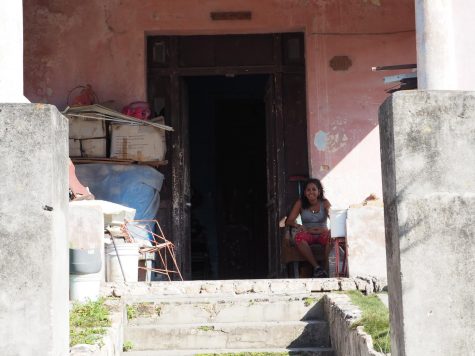
Just a few miles away from Habana Vieja sits Lawton, a neighborhood bustling with locals, a renowned artistic community center called Muraleando, and a warm and sunny temperature most months of the year.
Lawton is where I stayed for the majority of my trip. Instead of a hotel I stayed at a casa particular, which translates to ‘private home’. These casas, comparable to AirBnB, are common throughout Cuba, as they provide extra income for Cubans simply by renting out extra rooms of their homes.
Barbara and her husband, Osvaldo, are the owners of the casa at which I stayed. Everyone calls her Baby, pronounced bah-bee. She explained how because she was a doctor she had access to Wifi. Every month, she was allowed 25 hours of Internet access. I asked her to show me. I wanted to show her a funny video on YouTube. Simply to open YouTube, search the video, and click on it, took half an hour. All the while she showed me pictures of her family and the past.
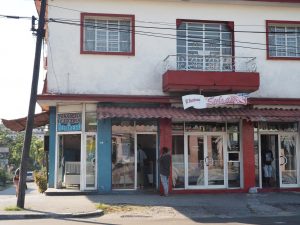
One of the pictures she showed me was a black and white relic of pre-revolution times. The moment captured her aunt and uncle standing in front of a pharmacy they owned. Not surprisingly, after the revolution it was taken away.
In front of our casa was an abandoned slaughterhouse. Several years ago, it was closed down. After the machinery was removed, people who did not have homes began to move in and since it has become an unofficial apartment complex.
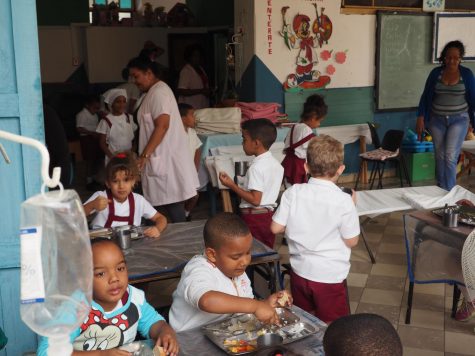
One of the places besides Havana we went to was Trinidad and Cienfuegos, both scenic towns with rich histories.
The consequences of the revolution and the embargo are everywhere. The most visible can be seen easily–in the economy and the government. However, more subtle effects of the historic events are prevalent but hard to see: such as the fact that Cuba ran out of the raw materials to make medicine last year and that virtually no Cuban has a dishwasher, laundry machine, or a dryer.
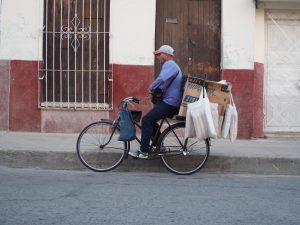
Cuba has come a long way from the revolution. The communist government is slowly disappearing, even though the government still owns most major companies–including the taxi company, the phone and wifi companies, TV, the radio, large farms and convenience stores, and more.
After the revolution, Cuba became a figurative time machine, especially in areas like the transportation sector. I will never forget the image in my head where one day, while I was walking to a fruit market, a bus passed by me. It was going at a slow enough speed that I looked through the window to the passengers, who looked back at me. As my eyes moved to the back of the bus, I noticed the door. The bus’ door had large, rusty holes in it. It was especially shocking for me because I never expected to see a government-run agency in such disrepair. This is perhaps because of the way I was raised– especially the higher standards of public transportation in the US.
Under Fidel Castro’s rule, Cubans could not have internet, listen to foreign music, or speak to foreigners. Valeria Arrossi, who traveled to Cuba in 1997 added, “The locals would ask me for shampoo and soap on the street.” Now, certain Cubans have internet, along with WiFi parks which allow paid access to WiFi. Phones became legal three years ago, and individuals can speak out against the government without fear of retribution.
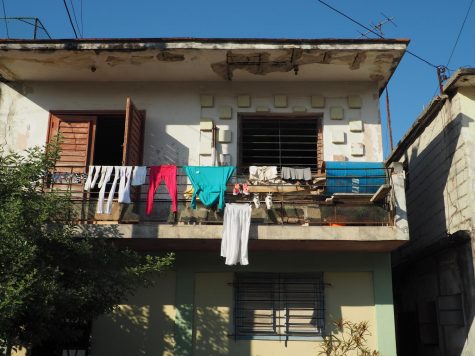
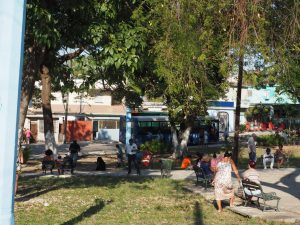
One of the places I visited was the San José market.
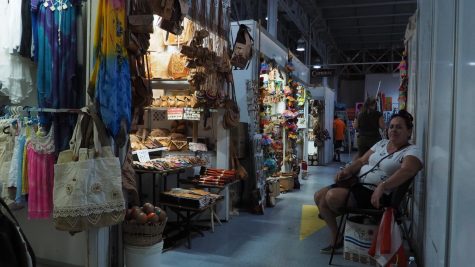
The San Jose Market
While walking through the artisanal market, it felt as if the vendors were begging us to buy from them. They called to us as we weaved through the narrow aisles.
At one point, I waited for my mother while she inquired about and bought wooden elephants and flowers, all of them carved in Cuba. While I waited, one of the retailers sensed I was tired of standing and offered me a seat,”Siéntate!”, she told me. We began to talk and she asked me where I was from, noticing the pronounced Argentine-American Spanish accent. I told her the United States, and our conversation flowed to politics.
“Do people really like Donald Trump?”
“Yes, it’s crazy.”
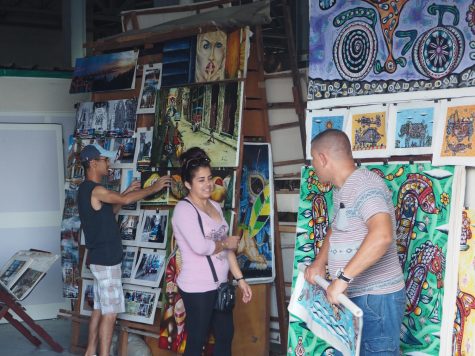
Imagine yourself at dinner time, driving down the street to Chipotle and eating your burrito bowl with a documentary on Netflix. For Cubans, the situation is a bit more complicated.
For one, there is no Chipotle, McDonalds, or Five Guys. While America, a nation of immigrants, seems to not have a standard meal, Cuba differs. The food is simple, such as rice and beans, salad without any dressing, or soup. Besides restaurants, Cubans buy their food at a market and cook their meals themselves. Almost everyday for lunch and dinner, I ate rice and beans. The food in Cuba is also organic, as there is no fertilizers or pesticides, and if there was, farmers could not afford them.
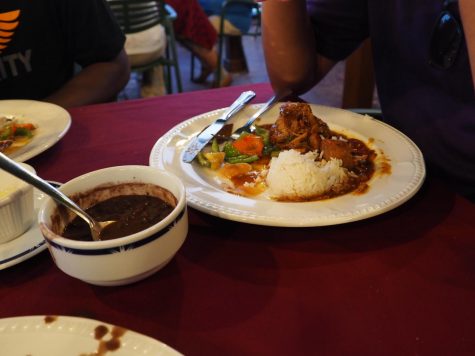
Besides food, there is no Netflix, Hulu, or Amazon Prime Video. Cubans get their documentaries, shows, and movies through a system that requires a bit more work. It starts off in a different country, where someone downloads shows and movies on to a hard drive. They then bring the hard drive to Cuba, and then rent it out for a few hours. In those few hours Cubans are supposed to download the media onto their computer or TV. Besides bringing in media, there is also an industry behind importing foreign, especially American, clothing brands.
Learning English is a requirement for Cubans in school. As may have been anticipated, during times when Cuba was supported economically by the Soviet Union, Cubans learned Russian. This political and social change is a result of the slow, but obvious, democratization of Cuba. Also during the period in which the Soviets supported Cuba, the government promoted Russia and disapproved of the US; however, when the Soviet Union fell, this type of thinking, for the most part, stopped.
One night, while speaking with Baby, we were discussing the government.
“What else does the government own?”
“Todo,” she replied–everything.
Continuing, she explained that the problem is not between the people, it is with the governments of the people.
Recently it has become harder to recruit and keep English teachers in Cuban schools due to the fact that teachers would rather work with American tourists in order to make more money.
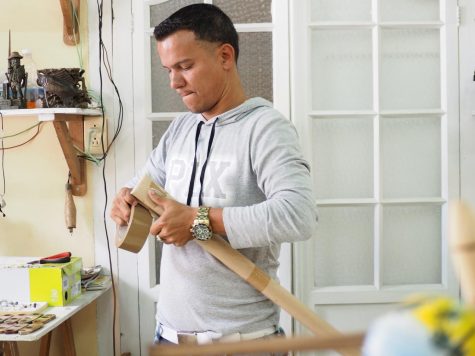
In Cuba, I was very surprised to learn that musicians and artists generally make more than doctors. Musicians and artists can be found everywhere. Especially in tourist areas where there is more potential to make money, but even when we ate in a small restaurant in the countryside, there was a small group playing.
Like many countries, Cuba’s history includes slavery. Besides slavery itself, the culture slaves brought with them have impacted Cuba’s culture and history. Afro-Cuban religions, like Santeria, are common.
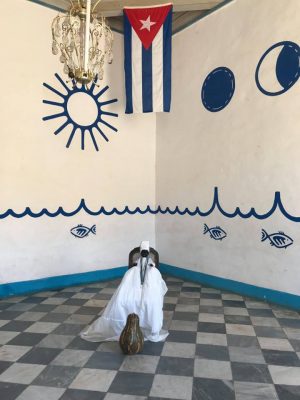
Santeria came from times of slavery and the blend of Spanish Catholicism and slave religions such as Yoruba. Santeria can be noticed passing a temple in the city with altars devoted to different gods, and in the animal sacrifices left on the street.
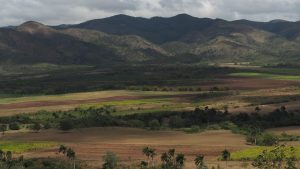
In between our journey from Havana to Trinidad, we stopped to buy fruits from a fruit vendor. He grows some of his food, but much of it is grown in the mountains, where he buys it from other producers and sells it.
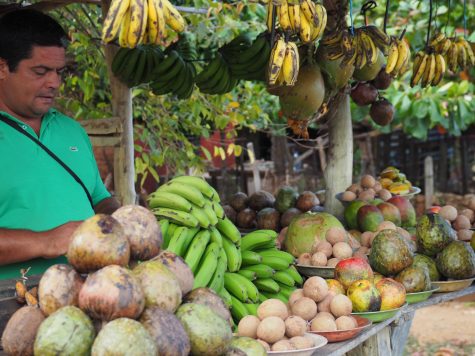
In the end, traveling to Cuba was a fantastic experience. It allowed me to learn about a culture, experience a different way of life, and be exposed to new ideas, foods, and customs. It truly changed my life.
All photographs by Pedro Chiesa


